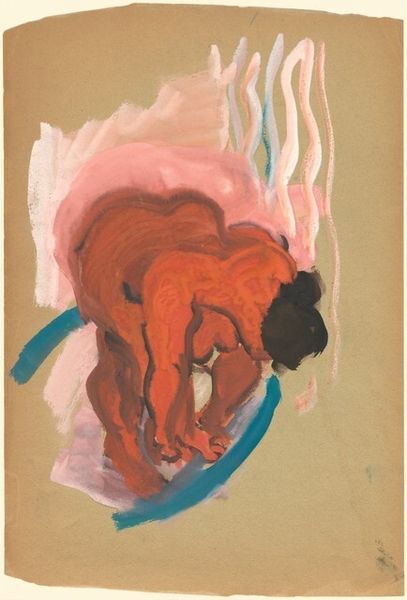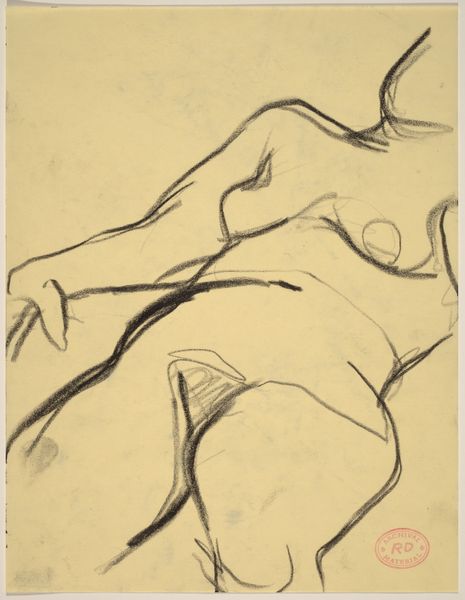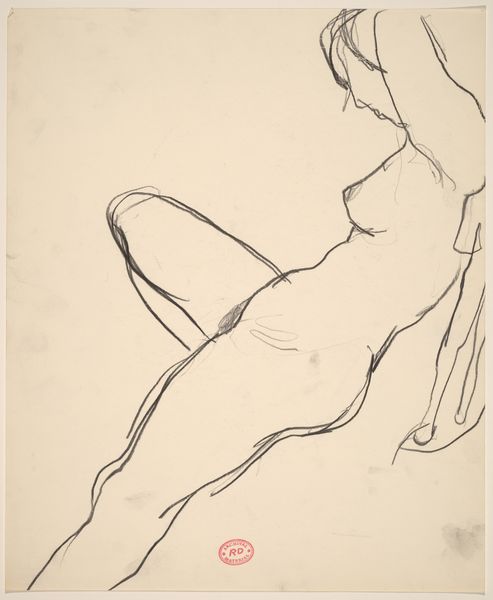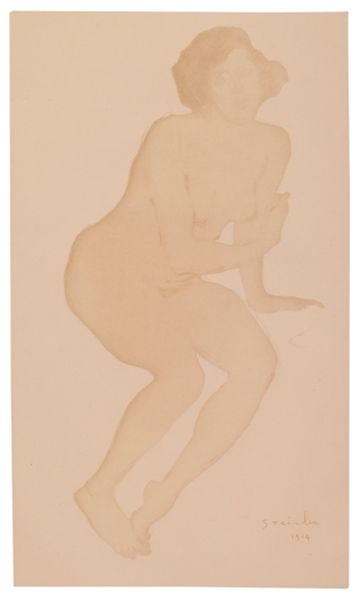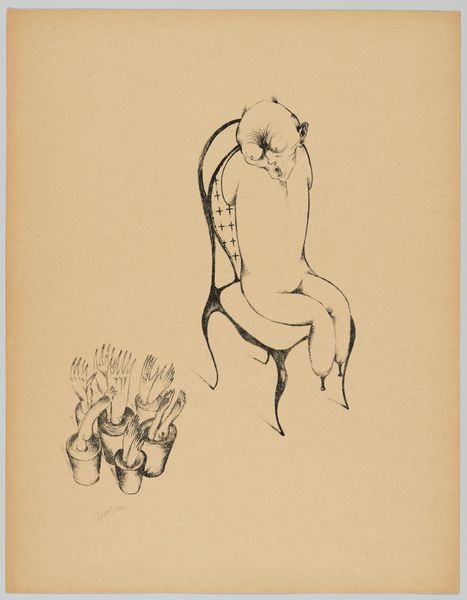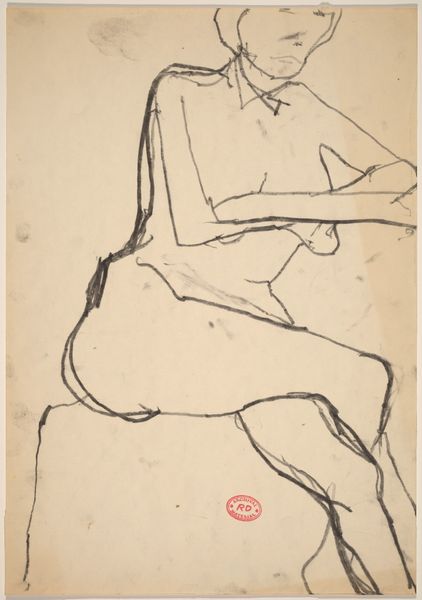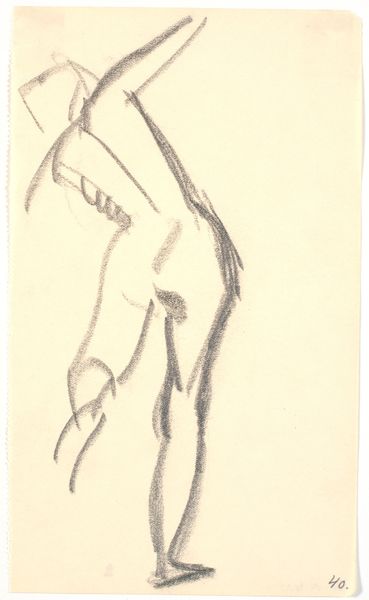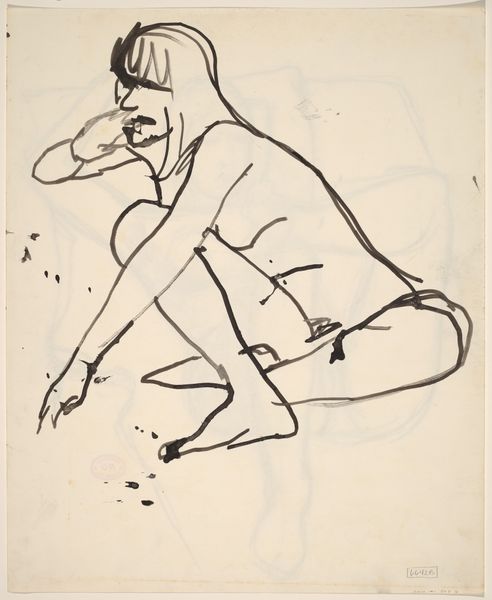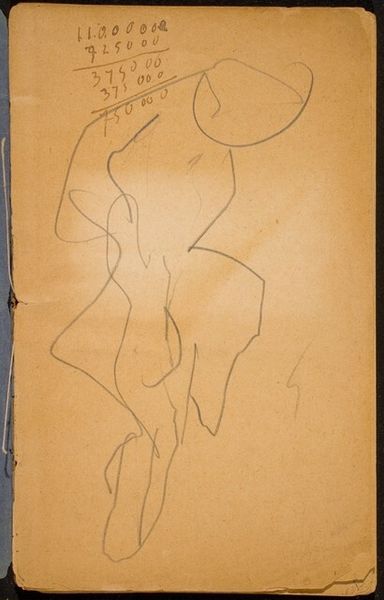![Woman Tying Her Shoelace [verso] by Mark Rothko](/_next/image?url=https%3A%2F%2Fd2w8kbdekdi1gv.cloudfront.net%2FeyJidWNrZXQiOiAiYXJ0ZXJhLWltYWdlcy1idWNrZXQiLCAia2V5IjogImFydHdvcmtzLzM3Yzg2Mjk2LWZjZjEtNDgwZS05OGNmLTc5MGY4MmI1YjhiNy8zN2M4NjI5Ni1mY2YxLTQ4MGUtOThjZi03OTBmODJiNWI4YjdfZnVsbC5qcGciLCAiZWRpdHMiOiB7InJlc2l6ZSI6IHsid2lkdGgiOiAxOTIwLCAiaGVpZ2h0IjogMTkyMCwgImZpdCI6ICJpbnNpZGUifX19&w=1080&q=75)
drawing, paper, ink
#
portrait
#
drawing
#
figuration
#
paper
#
ink
#
line
#
nude
Copyright: National Gallery of Art: CC0 1.0
Curator: Looking at this ink drawing on paper, titled “Woman Tying Her Shoelace,” attributed to Mark Rothko, I find myself intrigued. What are your first thoughts? Editor: Immediately, the stark simplicity of the lines against that warm, earthy background grabs me. There's something incredibly vulnerable and intimate about the pose, but also powerful in its groundedness. Curator: Groundedness is a key concept here. In Rothko's earlier representational work, before his abstract expressionist period, figuration served as a potent vehicle. This particular pose—the woman bent over, almost embracing the earth—resonates with ancient archetypes of humility and connection to the material world. Editor: Interesting. And that the figure is a nude connects, I suppose, to ideas about naturalism. It reminds me of some of the social realism emerging during this time, especially within the Ashcan school – an unidealized, every-day sort of image, absent the romantic gloss we saw previously. Curator: Indeed. It is hard to consider Rothko and naturalism or social realism. But note the expressive use of line: how a few bold strokes define form, weight, and tension. Ink, with its inherent immediacy, captures a fleeting moment – but there’s also a universal quality to it, like a modern take on archaic depictions of labor and domesticity. Consider how many historical artworks we have that idealize those same types of everyday acts. Here we don't find idealization. Editor: True, the gestural quality is strong. But the drawing still feels incomplete or provisional, an element of experimentation that anticipates, perhaps, his later focus on color fields, removing all representational figuration. There's something rebellious here, as it anticipates what the role of the artwork is meant to represent culturally. Curator: Perhaps it foreshadows, as well, the emotional weight color could hold for him. Here, in this earlier piece, he seeks to establish an emotional truth and access symbolic archetypes through this single figure’s humble, earthly act. What a powerful contrast. Editor: Well, it highlights Rothko's range, and for me, reinforces how even seemingly simple images can be steeped in profound cultural meaning and even challenge the conventions of art production at the time.
Comments
No comments
Be the first to comment and join the conversation on the ultimate creative platform.
